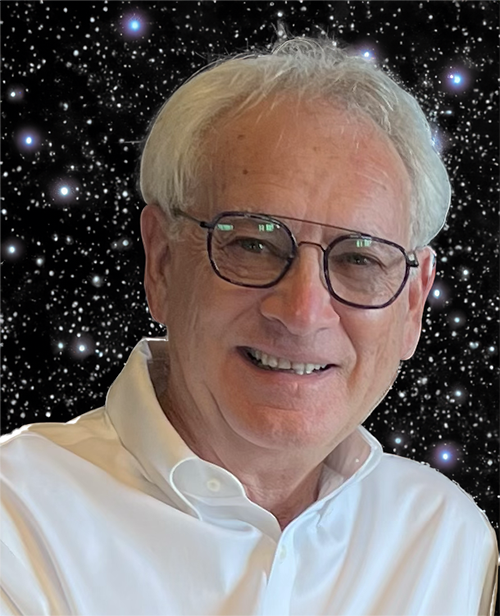[Editor’s Note: EDRM is proud to publish Ralph Losey’s advocacy and analysis. The opinions and positions are Ralph Losey’s copyrighted work.]
This is the conclusion to a two part article. Please read Part One first.
There must be legal recourse to stop this kind of fraud and so protect our basic freedoms. People must have good cause to believe in our judicial system, to have confidence that courts are a kind of protected sanctuary where truth can still be found. If not, and if truth cannot be reliably determined, then people will lose whatever little faith they still have in the courts despite the open corruption by some.
Ralph Losey, Losey.ai.
Professor Capra explains the proposals of Judge Grimm and Professor Grossman to modify Rule 901(b) to authenticate AI generated evidence by using Maura’s broken clock analogy:
The proposed revision substitutes the words “valid” and “reliable” for “accurate” in existing rule 901(b)(9), because evidence can be “accurate” in some instances but inaccurate in others (such as a broken watch, which “accurately” tells the time twice a day but is not a reliable means of checking the time otherwise).
Memorandum to the Committee at pages 6-7 (pgs. 19-20 of 358).
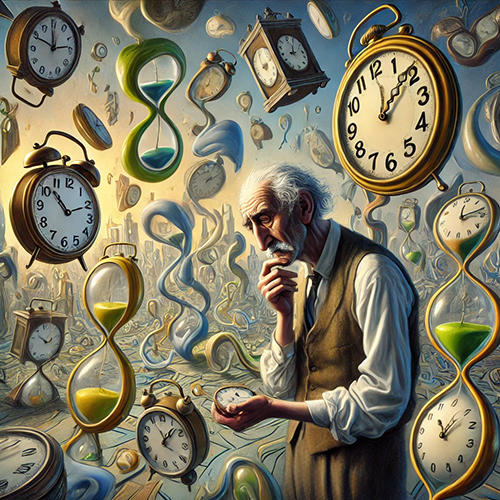
Salvador Dali-style image by Ralph Losey using his Visual Muse GPT.
Maura Grossman provided further explanation in her presentation to the Committee on why they recommended replacing the term accurate with reliable and valid.
PROF. GROSSMAN. I want to talk about language because I’m a real stickler about words, and I’ll talk to you about the way science has viewed AI. There are two different concepts. One is validity. We don’t use the word “accuracy.” And the other is reliability. Validity is: does the process measure or predict what it’s supposed to measure? So, I can have a perfectly good scale, but if I’m trying to measure height, then a scale is not a valid measure for height. Reliability has to do with “does it measure the same thing under substantially similar circumstances?” And it’s really important that we measure validity and reliability and not “accuracy” because a broken watch is accurate twice a day, right? But it’s not reliable.
So, for those of you who are more visual, when you’re valid and you’re reliable, you’re shooting at the target, and you are consistent. When you’re invalid and unreliable, you’re not shooting at the center, and you’re all over the place. When you’re invalid and reliable, you’re shooting at the wrong place, but you’re very consistent in shooting at the wrong place. And when you’re valid and unreliable, you are shooting at the center, but you’re all over the place.
We need evidence that is a product of a process that is both valid and reliable. Right now, the rules use the word “accuracy” or “accurate” in some places (such as in Rule 901(b)(9)) and “reliable” in other places (such as in Rule 702),189 and I think it’s confusing to practitioners because it doesn’t comport with what scientists mean by these words or how they’re used if you look them up in the dictionary.
Deepfakes Reach the Advisory Committee on Evidence Rules, supra at pg. 2428.
As to the second proposal of Grimm and Grossman to add a new Rule 901(c) to address “Deepfakes,” Professor Capra did not like that one either. He rejected the proposal with the following argument.
It would seem that resolving the argument about the necessity of the rule should probably be delayed until courts actually start dealing on a regular basis with deepfakes. Only then can it be determined how necessary a rule amendment really is. Moreover, the possible prevalence of deepfakes might be countered in court by the use of watermarks and hash fingerprints that will assure authenticity (as discussed below). Again, the effectiveness of these countermeasures will only be determined after a waiting period.
The balancing test in the proposal — applied when the burden-shifting trigger is met — is that the “probative value” must outweigh the prejudicial effect. It can be argued that importing this standard confuses authenticity with probative value. . . . Put another way, the probative value of the evidence can only logically be assessed after it is determined to be authentic. Having authenticity depend on probative value is a pretty complicated endeavor. Moreover, presumably the prejudice referred to is that the item might be a deepfake. But if the proponent can establish that it is authentic, then there would be no prejudice to weigh. . . . At any rate, more discussion in the Committee is necessary to figure out whether, if there is going to be an amendment, what requirement must be placed on the proponent once the opponent shows enough to justify a deepfake inquiry.
Memorandum to the Committee at pg. 8 (pg. 21 of 358).
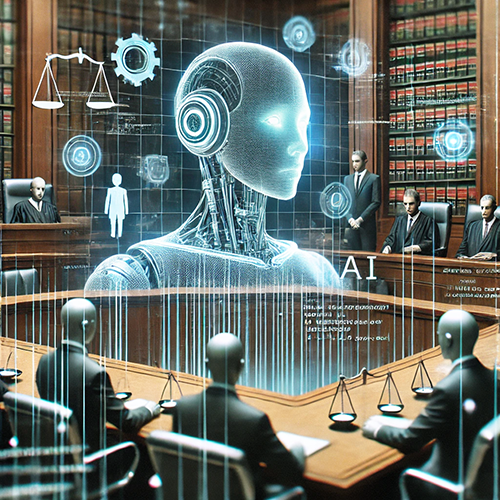
From the record it appears that Grimm and Grossman were not given an opportunity to respond to these criticisms. So once again the Committee followed Professor Capra’s lead and all of the rule changes they proposed were rejected. Again, with respect, I think Dan Capra missed the point again. Authentic evidence can already be withheld as too prejudicial under current Federal Evidence Rule 403 (Excluding Relevant Evidence for Prejudice, Confusion, Waste of Time, or Other Reasons). But the process and interpretation of existing rules is what is too complex. That is a core reason for the Grimm and Grossman proposals.
Moreover, in the world of deepfakes things are not as black and white as Capra’s analysis assumes. Often authenticity of audio visuals is a gray area question, a continuum, and not a simple yes or no. It appears that the Committee’s decisions would benefit from the input of additional technology advisors, independent ones, on the rapidly advancing field of AI image generation.
The balancing procedure Grimm and Grossman suggested is appropriate. If it is a close question on authenticity, and the prejudice is small, then it makes sense to let it in. If authenticity is a close question, and the prejudice is great, say even outcome determinative, then exclude it. And of course if the proof of authenticity is strong, and the probative value strong, even outcome determinative, then the evidence should be allowed. The other side of the coin, if that if the evidence is strong that the video is a fake, it should be excluded, even if that decision is outcome determinative.
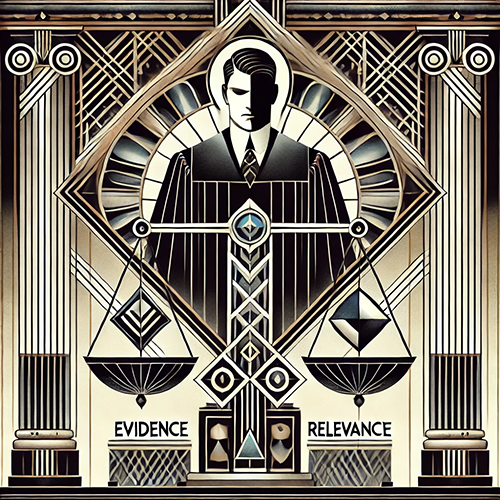
Art Deco-style image by Ralph Losey using his Visual Muse GPT.
Capra’s Questionable Evaluation of the Danger of Deepfakes
In his memorandum Professor Capra’s introduced the proposed Rule Changes with the following statement.
The consequence of not formally adopting the proposals below at this meeting is that any AI-related rule amendment will have to wait a year. One could argue that the Committee needs to act now, to get out ahead of what could be a sea change in the presentation of evidence. Yet there seems to be much merit in a cautious approach. To say that the area is fast-developing would be an understatement. The EU just recently scrapped its one-year-old regulations on AI, recognizing that many of the standards that were set had become outmoded. The case law on AI is just beginning. It surely makes sense to monitor the case law for (at least) a year to see how the courts handle AI-related evidence under the existing, flexible, Federal Rules.
Memorandum to the Committee at pg. 5 (pg. 18 of 358).
Naturally the Committee went with what they were told was the cautious approach. But is doing nothing really a cautious approach? In times of crisis inaction is usually reckless, not cautious. Professor Capra’s views are appropriate for normal times, where you can wait a few years to see how new developments play out. But these are not normal times. Far from it.
Artificial intelligence and its misuse as deepfake propaganda is evolving quickly. Highly realistic fabricated media can already convincingly distort reality. This will likely get worse and keep us at risk of manipulation by criminals and foreign powers. This can even threaten our elections. . .
Ralph Losey, Losey.ai.
We are seeing an acceleration of fraud, or fake everything, and a collapse of truth and honesty. Society has already been disrupted by rapid technical and social changes, and growing distrust of the judicial system. Fraud, propaganda and nihilistic relativism are rampant. What is the ground truth? How many people believe in an objective truth outside of the material sciences? How many do not even accept science? Is it not dangerous under these conditions to wait longer to try to curb the adverse impact of deepfakes?
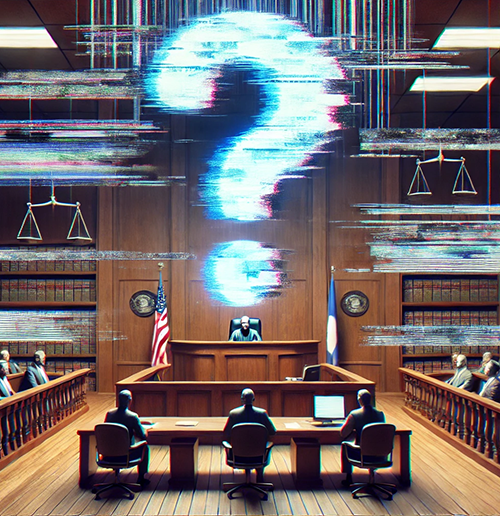
Image by Ralph Losey using his Visual Muse GPT.
‘That Was Then, This Is Now’
There is little indication in Professor Capra’s reports that he appreciates the urgency of the times, nor the gravity of the problems created by deep fakes. The “Deepfake Defense” is more than a remote possibility. The lack of published opinions on deepfake evidence should not lull anyone into complacency. It is already being raised, especially in criminal cases.
Consider the article of Judge Herbert B. Dixon Jr., Senior Judge with the Superior Court of the District of Columbia. The “Deepfake Defense”: An Evidentiary Conundrum (ABA, 6/11/24). Judge Dixon is well known for his expertise in technology. For instance, he is the technology columnist for The Judges’ Journal magazine and senior judicial adviser to the Center for Legal and Court Technology
Judge Dixon reports this defense was widely used in D.C. courts by individuals charged with storming the Capitol on January 6, 2021. The Committee needs more advisors like Judge Dixon. He wants new rules and his article The “Deepfake Defense” discusses three proposals: Grimm and Grossman’s, Delfino’s and LaMonaga’s. Here is Judge Dixon’s conclusion in his article:
As technology advances, deepfakes will improve and become more difficult to detect. Presently, the general population is not able to identify a deepfake created with current technology. AI technology has reached the stage where the technology needed to detect a deepfake must be more sophisticated than the technology that created the deepfake. So, in the absence of a uniform approach in the courtroom for the admission or exclusion of audio or video evidence where there are credible arguments on both sides that the evidence is fake or authentic, the default position, unfortunately, may be to let the jury decide.
Judge Herbert B. Dixon Jr., The “Deepfake Defense.”
Professor Capra addressed the new issues raised by electronic evidence decades ago by taking a go-slow approach and waiting to see if trial judges could use existing rules. That worked for him in the past, but that was then, this is now.
Courts in the past were able to adapt and used the old rules well enough. That does not mean that their evidentiary decisions might have been facilitated, and still might be, by some revisions related to digital versus paper. But Capra assumes that since the courts adapted to digital evidence when it became common decades ago, that his “wait and see” approach will work once again. He reminds the Committee of this in his memorandum:
In hindsight, it is fair to state that the Committee’s decision to forego amendments setting forth specific grounds for authenticating digital evidence was the prudent course. Courts have sensibly, and without extraordinary difficulty, applied the grounds of Rule 901 to determine the authenticity of digital evidence. . . .
The fact that the Committee decided not to promulgate special rules on digital communication is a relevant data point, but it is not necessarily dispositive of amending the rules to treat deepfakes.18
Memorandum to the Committee at pg. 21 (pg. 34 of 358).
Professor Capra will only say that the past decision to do nothing is “not necessarily dispositive” on AI. That implies it is pretty close to dispositive. Memorandum to the Committee at pgs. 8-9, 20- (pgs. 21-22, 33- of 358). The Professor and Committee do not seem the appreciate two things:
- The enormous changes in society and the courts that have taken place since the world switched from paper to digital. That happened in the nineties and early turn of the century. In 2024 we are living in a very different world.
- The problem of deepfake audio-visuals is new. It is not equivalent to the problems courts have long faced with forged documents, electronic or paper. The change from paper to digital is not comparable to the change from natural to artificial intelligence. AI plays a completely different role in the cases now coming before the courts than has ever been seen before. Consider the words of Chief Justice John Roberts, Jr., in his 2023 Year-End Report:
Every year, I use the Year-End Report to speak to a major issue relevant to the whole federal court system. As 2023 draws to a close with breathless predictions about the future of Artificial Intelligence, some may wonder whether judges are about to become obsolete. I am sure we are not—but equally confident that technological changes will continue to transform our work. . . .
I predict that human judges will be around for a while. But with equal confidence I predict that judicial work—particularly at the trial level—will be significantly affected by AI. Those changes will involve not only how judges go about doing their job, but also how they understand the role that AI plays in the cases that come before them.
Chief Justice John Roberts, Jr., 2023 Year-End Report, pgs. 5, 6.
Is it really prudent and cautious for the Evidence Rules Committee to take the same approach with AI deepfakes as they did many years ago with digital evidence? AI now plays a completely new role in the evidence of the cases that now come before them. The emotional and prejudicial impact of deepfake audio-visuals is an entirely new and different problem. Plus, the times and circumstances in society have dramatically changed. The assumptions made by Committee Reporter Capra of the equivalence of the technology changes is a fundamental error. With respect, the Committee should reconsider and reverse its decision.
The assumption that the wait and see approach will work again with AI and deepfakes is another serious mistake. It is based on wishful thinking not supported by the evidence that the cure for deepfakes is just around the corner, that new software will soon be able to detect them. It is also based on wishful thinking that trial judges will again be able to muddle through just fine. Judge Grimm who just recently retired as a very active District Court trial judge disagrees. Judge Dixon who is still serving as a reserve senior trial judge in Washington D.C. disagrees. So do many others. The current rules are a muddled mess that needs to be cleaned up now. With respect, the Committee should reconsider and reverse its decision.
Social Conditions and Questions Compelling Action
Everyone today carries a video camera/phone and has access to free software on the internet to make fakes. Maura’s demonstration to the Committee showed that. That is why many think the time is now for new rules on AI, not tomorrow.
What are the consequences of continued inaction? What if courts are unable to twist existing rules to screen out fake evidence as Professor Capra hopes? What will happen to our system of justice if use of fake media becomes a common litigation tactic? How will the Liar’s Dividend pay out? What happens when susceptible, untrained juries are required to view deep fakes and then asked to do the impossible and disregard them?
How can courts function effectively without reliable rules and methods to expose deepfakes? Should we make some rule changes right away to protect the system from collapse? Or should we wait until it all starts to fall apart?
Ralph Losey, Losey.ai.
If we cannot reliably determine what is fake and what is true in a court of law, what happens then? Are we not then wide open and without judicial recourse to criminal and enemy state manipulation? Can law enforcement and the courts help stop deepfake lies and propaganda? Can we even have free and fair elections? How can courts function effectively without reliable rules and methods to expose deepfakes? Should we make some rule changes right away to protect the system from collapse? Or should we wait until it all starts to fall apart?
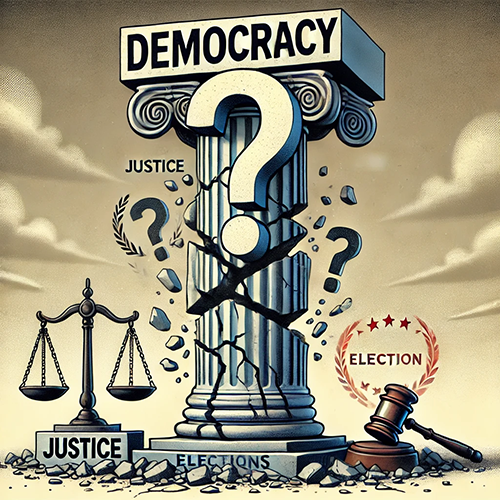
Professor Capra’s Conclusion in his Report to the Committee
Professor Capra ends his report with a one paragraph conclusion here quoted in full.
It is for the Committee to decide whether it is necessary to develop a change to the Evidence Rules in order to deal with deepfakes. If some rule is to be proposed, it probably should not be a specific rule setting forth the methods in which visual evidence can be authenticated — as those methods are already in Rule 901, and the overlap would be problematic. Possibly more productive solutions include heightening the standard of proof, or requiring an additional showing of authenticity — but only after some showing by the opponent has been made. But any possible change must be evaluated with the perspective that the authenticity rules are flexible, and have been flexibly and sensibly applied by the courts to treat other forms of technological fakery.
Memorandum to the Committee at pg. 26 (pg. 39 of 358).
I expect the Rules Committee will follow Capra’s advice and do nothing. But 2024 is not over yet and so there is still hope.
What Comes Next?
The next Advisory Committee on Evidence Rules is scheduled for November 8, 2024 in New York, NY and will be open to the public both in-person and online. While observers are welcome, they may only observe, not participate.
Meanwhile many experts in AI, evidence, and procedure continue to advocate for changes to the rules. The most compelling article I know of that shows the need for change now was published on an expedited basis on September 10, 2024. Deepfakes in Court: How Judges Can Proactively Manage Alleged AI-Generated Material in National Security Cases (Northwestern Public Law Research Paper No. 24-26, (9/10/24). It has eight authors with the leads being Paul Grimm and Maura Grossman. The article considers a frightening national security scenario that may help light a fire under the Committee. I know it has for me.
In addition, we have just learned that Paul Grimm and Maura Grossman have submitted a revised proposal to the Committee, which will be discussed first. This was presumably done at the request of Professor Daniel Capra after some sort of discussion, but that is just speculation.
Grimm and Grossman’s Revised Proposal to Amend the Rules
The revised proposal, which includes the extensive rationale provided by Grimm and Grossman, can be found online here in PDF format.
REVISED Proposed Modification of Current Fed. R. Evid. 901(b)(9) for AI Evidence and Proposed New Fed. R. Evid. 901(c) for Alleged “Deepfake” Evidence.
Submitted by Paul W. Grimm and Maura R. Grossman
[901](b) Examples. The following are examples only—not a complete list—of evidence that satisfies the requirement [of Rule 901(a)]:
(9) Evidence about a Process or System. For an item generated by a process or system:
(A) evidence describing it and showing that it produces an accurate a valid and reliable result; and
(B) if the proponent acknowledges that the item was generated by artificial intelligence, additional evidence that:
(i) describes the training data and software or program that was used; and
(ii) shows that they produced valid and reliable results in this instance.
Note the only change from the last proposal for 901(b)(9) is use of the word “acknowledges” instead of “concedes” in 9(B). I agree this is a good and necessary revision because litigators hate to “concede” anything, but often have to “acknowledge.”
The revised proposed language for a new Rule 901(c) to address deepfakes is now as follows:
901(c): Potentially Fabricated or Altered Electronic Evidence.
If a party challenging the authenticity of computer-generated or other electronic evidence demonstrates to the court that a jury reasonably could find that the evidence has been altered or fabricated, in whole or in part, using artificial intelligence,1 the evidence is admissible only if the proponent demonstrates that its probative value outweighs its prejudicial effect on the party challenging the evidence.
The changes made here from the last proposal were minor, but again appear helpful to clarify the intent. Here is the proposal showing strike outs and additions (underlined).
901(c): Potentially Fabricated or Altered Electronic Evidence.
If a party challenging the authenticity of computer-generated or other electronic evidence demonstrates to the courtthat it is more likely than not either fabricated, or alteredthat a jury reasonably could find that the evidence has been altered or fabricated, in whole or in part, using artificial intelligence,1 the evidence is admissible only if the proponent demonstrates that its probative value outweighs its prejudicial effect on the party challenging the evidence.
I understand why these revisions were made, perhaps requested, and I again think they are all good. So too is the Rationale provided by Judge Paul and Professor Grimm. See the full second proposal Rationale here, but what follows are the excerpts of the Rationale that I found most helpful, all pertaining to new Rule 901(c):
A separate, new rule is needed for such altered or fake evidence, because when it is offered, the parties will disagree about the fundamental nature of the evidence. The opposing party will challenge the authenticity of the evidence and claim that it is AI-generated material, in whole or in part, and therefore, fake, while the proponent will insist that it is not AI-generated, but instead that it is simply a photograph or video (for example, one taken using a “smart phone”), or a audio recording (such as one left on voice mail), or an audiovisual recording (such as one filmed using a digital camera). Because the parties fundamentally disagree about the very nature of the evidence, the proposed rule change for authenticating acknowledged AI-generated evidence will not work. A separate, new rule is required. . . .
The proposed new rule places the burden on the party challenging the authenticity of computer-generated or electronic evidence as AI-generated material to make a showing to the court that a jury reasonably could find (but is not required to find) that it is either altered or fabricated, in whole or in part. This approach recognizes that the facts underlying whether the evidence is authentic or fake may be challenged, in which case the judge’s role under Fed. R. Evid. 104(a) is limited to preliminarily evaluating the evidence supporting and challenging authenticity, and determining whether a reasonable jury could find by a preponderance of the evidence that the proffered evidence is authentic. If the answer is “yes” then, pursuant to Fed. R. Evid. 104(b), the judge ordinarily would be required to submit the evidence to the jury under the doctrine of relevance conditioned upon a finding of fact, i.e., Fed. R. Evid. 104(b).
Because deepfakes are getting harder and harder to detect, and because they often can be so graphic or have such a profound impact that the jury may be unable to ignore or disregard the impact even of generative AI shown to be fake once they have already seen it, a new rule is warranted that places more limits on what evidence the jury will be allowed to see. See generally Taurus Myhand, Once The Jury Sees It, The Jury Can’t Unsee It: The Challenge Trial Judges Face When Authenticating Video Evidence in The Age of Deepfakes, 29 Widener L. Rev. 171, 174-5, 2023 (“The dangerousness of deepfake videos lie in the incomparable impact these videos have on human perception. Videos are not merely illustrative of a witnesses’ testimony, but often serve as independent sources of substantive information for the trier of fact. Since people tend to believe what they see, ‘images and other forms of digital media are often accepted at face value.’ ‘Regardless of what a person says, the ability to visualize something is uniquely believable.’ Video evidence is more cognitively and emotionally arousing to the trier of fact, giving the impression that they are observing activity or events more directly.” (Internal citations omitted).
If the judge is required by Fed. R. Evid. 104(b) to let the jury decide if image, audio, video, or audiovisual evidence is genuine or fake when there is evidence supporting each outcome, the jury is then in danger of being exposed to evidence that they cannot “un-remember,” even if the jurors have been warned or believe it may be fake. This presents an issue of potential prejudice that ordinarily would be addressed under Fed. R. Evid. 403. But Rule 403 assumes that the evidence is “relevant” in the first instance, and only then can the judge weigh its probative value against the danger of unfair prejudice. But when the very question of relevance turns on resolving disputed evidence, the current rules of evidence create an evidentiary “Catch 22”—the judge must let the jury see the disputed evidence on authenticity for their resolution of the authenticity challenge (see Fed. R. Evid. 104(b)), but that exposes them to a source of evidence that may irrevocably alter their perception of the case even if they find it to be inauthentic.
The proposed new Fed. R. Evid. 901(c) solves this “Catch 22” problem. It requires the party challenging the evidence as altered or fake to demonstrate to the judge that a reasonable jury could find that the challenged evidence has been altered or is fake. The judge is not required to make the finding that it is, only that a reasonable jury could so find. This is similar to the approach that the Supreme Court approved regarding Fed. R. Evid. 404(b) evidence (i.e., other crimes, wrongs, or acts evidence) in Huddleston v. U.S., 108 S. Ct. 1496, 1502 (1988) and the Third Circuit approved regarding Fed. R. Evid. 415 evidence (i.e., similar acts in civil cases involving sexual assault or child molestation) in Johnson v. Elk Lake School District. 283 F. 3d 138, 143-44 (3d. Cir. 2002).
Under the proposed new rule, if the judge makes the preliminary finding that a jury reasonably could find that the evidence has been altered or is fake, they would be permitted to exclude the evidence (without sending it to the jury), but only if the proponent of the evidence cannot show that its probative value exceeds its prejudicial impact. The proponent could make such a showing by offering additional facts that corroborate the information contained in the challenged image, video, audio, or audiovisual material. This is a fairer balancing test than Fed. R. Evid. 403, which leans strongly towards admissibility. Further, the proposed new balancing test already is recognized as appropriate in other circumstances. See, e.g., Fed. R. Evid 609(a)(1)(B) (requiring the court to permit a criminal defendant who testifies to be impeached with a prior felony conviction only if “the probative value of the evidence outweighs its prejudicial effect to that defendant.”)
REVISED Proposed Modification of Current Fed. R. Evid. 901(b)(9) for AI Evidence and
Proposed New Fed. R. Evid. 901(c) for Alleged “Deepfake” Evidence.
With respect, the Committee should approve this revised rule proposal and seek its approval and adoption by the U.S. Supreme Court as soon as possible. The rules should have retroactive implementation wherever feasible. They may be needed very soon as the new article Deepfakes in Court eloquently explains.
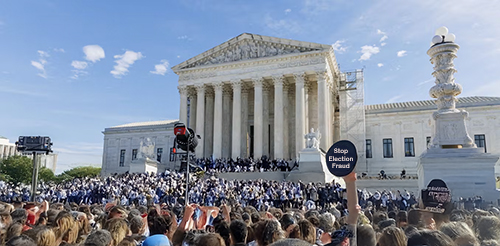
Image by Ralph Losey & Photoshop.
Deepfake In Courts
Deepfakes in Court is a 52-page law review article authored by eight scholars: the Hon. Paul W. Grimm (ret.), Duke Law School, Duke University, Maura R. Grossman, David R. Cheriton School of Computer Science, University of Waterloo and Osgoode Hall Law School, York University, Abhishek Dalal, Pritzker School of Law, Northwestern University; Chongyang Gao, Northwestern University; Daniel W. Linna Jr., Pritzker School of Law & McCormick School of Engineering, Northwestern University; Chiara Pulice, Dept. of Computer Science & Buffett Institute for Global Affairs, Northwestern University; V.S. Subrahmanian, Dept. of Computer Science & Buffett Institute for Global Affairs, Northwestern University and the Hon. John Tunheim, United States District Court for the District of Minnesota.
Deepfakes in Court considers how existing rules could be used to address deepfake evidence in sensitive trials, such as those concerning national security, elections, or other matters of significant public concern. A hypothetical scenario involves a Presidential election in 2028 where the court’s decision could determine the outcome of the election. The burden on judges in a crises scenario like that would be lessened by the adoption of the revised Grimm and Grossman rule proposals. But if they are not, the article shows how a national security case would play out under the existing rules.
The timeliness of this article is obvious in view of the pending national elections in the U.S.. See e.g. Edlin and Norden, Foreign Adversaries Are Targeting the 2024 Election (Brennan Center for Justice, 8/20/24). Courtney Rozen of Bloomberg Law reports:
The rise of AI has supercharged bipartisan concerns about the possibility of deepfakes — manipulated images, audio, and video of humans — to sway voters ahead of the November elections. AI tools make it easier and cheaper to create deepfakes.
Election Officials Say Candidates Can’t Mislead With AI Ads (Bloomberg Law, 9/10/24).
Deepfakes in Court: How Judges Can Proactively Manage Alleged AI-Generated Material in National Security Cases begins by describing the growing concern over deepfakes—AI-generated media that can simulate real events, people, and speech with high accuracy. This could be incredibly troubling in high-stakes cases involving national security and elections. In cases like that false or manipulated evidence could have severe consequences. The article makes this point well.
The article continues by noting how easy it is now to create AI-generated content. While some platforms include restrictions and watermarks to prevent misuse, these protections are often inadequate. Deepfake generation is sophisticated enough that even experts struggle to distinguish real from fake, and watermarking or digital signatures can often be bypassed. This creates a “cat and mouse” game between deepfake creators and those attempting to detect and prevent their misuse.
Connie v. Eric: The All Too Possible Case That Everyone Should Fear
The core of the article is a hypothetical case involving the two Presidential candidates in the last ninety days before the election. One, named Connie, has filed suit against her opponent, Eric. Connie seeks an injunction and other relief against Eric and his campaign. She alleges Eric is behind the creation and circulation multiple deepfake videos and audios against her. The main ones show Connie having sex with a Chinese diplomat. In other videos she is shown soliciting bribes from Chinese officials. Still other videos show Connie’s supporters stuffing ballot boxes. All of the videos are very real looking and some are quite shocking. They are being circulated by thousands of bots across the internet.
Connie’s lawsuit seeks expedited adjudication and other injunctive relief within ninety days as to whether the videos are fake and whether Eric is behind them. Although some of the jurors assigned to the case have already seen at least some of the videos. Many have not. Can you imagine their reaction? Can they unsee that even if they later determine they are probably fake? Even if the judge tells them to disregard that evidence? What will the impact be?
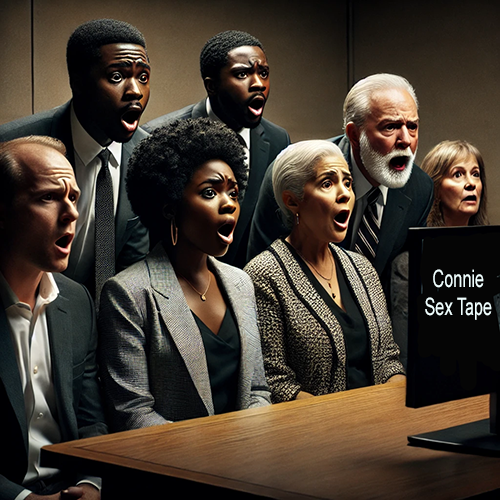
Documentary photo-style image by Ralph Losey using his Visual Muse GPT.
Since this is a hypothetical created by multiple professors the facts get even more complicated. Audios start to be circulated by Connie’s supporters where Eric is recorded saying “Wow! This technology is so good now it would be impossible for anyone to spot it as a fake.” There are more audios where he and his campaign make other damning admissions. All of the tapes sound exactly like Eric. He of course claims these audios are all fake and files counterclaims in the same lawsuit. Eric opposes a quick resolution of Connie’s lawsuit because he believes that overall the videos help his campaign.
Of course, the circulation of these tapes and allegations lead to massive protests and further polarization of the country. The constant propaganda on both sides has triggered riots and violence between the two political parties and their supporters everywhere, but especially in the Capital. Discussion about actual issues is drowned out by the allegations of fraud by both sides. These are very dark times, with daily shootings. The election is only ninety days away.
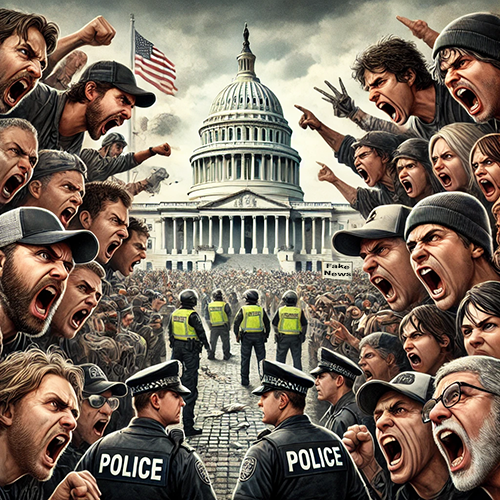
Photorealistic-style image by Ralph Losey using his Visual Muse GPT.
This is a scary hypothetical set of facts showing how deepfakes can easily be weaponized in an election. The facts in the article are actually much more complicated than I have described. See pages 16-21 of Deepfakes in Court. It reminds me of a law school final exam from hell, but does its job well of showing the dazzlingly complex situation and the challenges faced under the Rules of Evidence. Plus you get to read the perfect answers of how the existing rules would work under this all too possible scenario. This is all described in pages 18-47 of Deepfakes in Court. I urge you, no dare you, to read it. I am quite sure it was very challenging to write, even by the eight world authorities who prepared this.
What are the poor federal judges assigned to this case supposed to do? The article answers that question using the existing evidence rules. Let us hope real judges are not faced with this scenario, but if they are, then this article will provide a detailed roadmap as to how the case should proceed.
The GPTJudge Framework
The authors recommend a judge use what they call the “GPTJudge” framework when faced with deepfake issues, including expedited and active use of pre-trial conferences, focused discovery, and pre-trial evidentiary hearings. The framework includes expert testimony both before and during trial where experts would explain the underlying AI processes to the judge and help the court assess the reliability of the evidence. The idea is to show the possible application of existing rules to have a speedy trial on deepfake issues.
The GPTJudge framework itself was previously set forth in the 2023 article without any hypotheticals by Maura R. Grossman, Hon. Paul W. Grimm (ret.), Daniel G. Brown, and Molly (Ximing) Xu in The GPTJUDGE: Justice in a Generative AI World, Vol. 23, Iss. 1 of Duke Law & Technology Review (Oct. 2023). Also see Ralph Losey, REAL OR FAKE? New Law Review Article Provides a Good Framework for Judges to Make the Call (6/13/23).
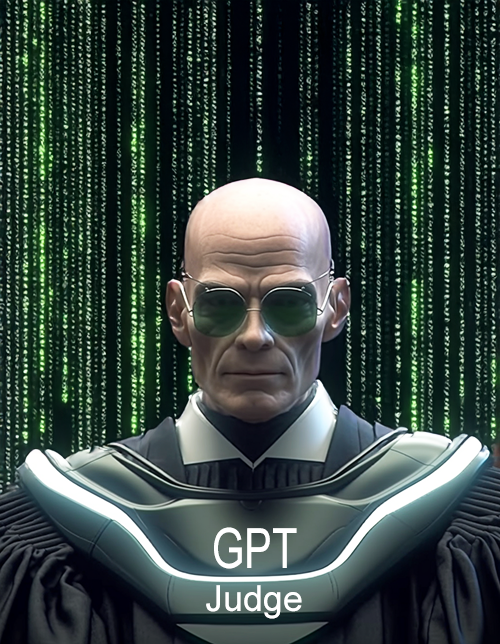
The Deepfakes in Court article applies the existing rules and GPTJudge framework to the facts and emergency scenario outlined in the hypothetical. It explains the many decisions that a judge would likely face, but not the predicted rulings such as some law school exams might request. The article also does not predict the ultimate outcome of the case, whether an injunction would issue, and if it did, what it would say. That is really not necessary or appropriate because in real life the exact rulings would depend on the witness testimony and countless other facts that the judge would hear first before making a gatekeeper determination on showing the audio visuals to the jury. The devil is always in the details. The devil’s power in this case is compounded by the wording of the old rules.
Deepfakes in Court Conclusion
The article Deepfakes in Court: How Judges Can Proactively Manage Alleged AI-Generated Material in National Security Cases concludes in an eloquent but dark tone, which seems appropriate in these times.
Given the ease with which anyone can create a convincing deepfake, courts should expect to see a flood of cases in which the parties allege that evidence is not real, but AI generated. Election interference is one example of a national security scenario in which deepfakes have important consequences. There is unlikely to be a technical solution to the deepfake problem. Most experts agree that neither watermarks nor deepfake detectors will completely solve the problem, and human experts are unlikely to fare much better. Courts will have no option, at least for the time being, other than to use the existing Federal Rules of Evidence to address deepfakes. The best approach will be for judges to proactively address disputes regarding alleged deepfakes, including through scheduling conferences, permitted discovery, and hearings to develop the factual and legal issues to resolve these disputes well before trial.
Even as several scholars propose to amend the Federal Rules of Evidence in recognition of the threat posed by deepfake evidence, such changes are unlikely in the near future. Meanwhile, trial courts will require an interim solution as they grapple with AIM evidence. Rule 403 will play an important role, as the party against whom an alleged deepfake is proffered may be able to make a compelling argument that the alleged deepfake should be excluded because the probative value of the alleged deepfake is substantially outweighed by the potential for unfair prejudice because social science research shows that jurors may be swayed by audiovisual evidence even when they conclude that it is fake. This argument will be strongest when the alleged deepfake will lead the jury to decide the case based on emotion rather than on the merits.
Deepfakes in Court: How Judges Can Proactively Manage Alleged AI-Generated Material in National Security Cases.

Photorealistic-style image by Ralph Losey using his Visual Muse GPT.
Based on my long experience with people and courts I am inclined to agree with the article’s conclusion. Soon it may be obvious to the Rules Committee from multiple botched cases that all-too-human juries are ill equipped to make deepfake determinations. See e.g. footnotes 8-17 at pgs. 4-17 of Deepfakes in Court. Moreover, even the best of our judges may find it hopelessly complex and difficult to adjudicate deepfake cases under the existing rules.
Conclusion
Artificial intelligence and its misuse as deepfake propaganda is evolving quickly. Highly realistic fabricated media can already convincingly distort reality. This will likely get worse and keep us at risk of manipulation by criminals and foreign powers. This can even threaten our elections as shown by Deepfakes in Court.
There must be legal recourse to stop this kind of fraud and so protect our basic freedoms. People must have good cause to believe in our judicial system, to have confidence that courts are a kind of protected sanctuary where truth can still be found. If not, and if truth cannot be reliably determined, then people will lose whatever little faith they still have in the courts, despite the open corruption by some. This could lead to widespread disruption of society reacting to growing deepfake driven propaganda and the hate and persecution they bring about. If the courts cannot protect the people from the injustice of lying and fraud what recourse will they have?
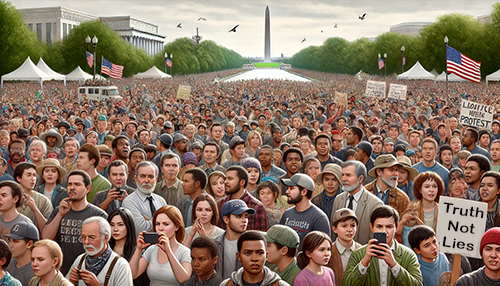
Photo art-style image by Ralph Losey using his Visual Muse GPT.
The upcoming Evidence Committee meeting is scheduled for November 8th, three days after election day on November 5th. What will our circumstances be? What will the mood of the country be? What will the mood and words be of the two candidates? Will the outcome even be known in three days after the election? Will the country be calm? Or will shock, anger and fear prevail? Will it even be possible for the Committee to meet in New York City on November 8th? And if they do, and approve new rules, will it be too little too late?
Ralph Losey Copyright 2024 – All Rights Reserved
Assisted by GAI and LLM Technologies per EDRM GAI and LLM Policy.


